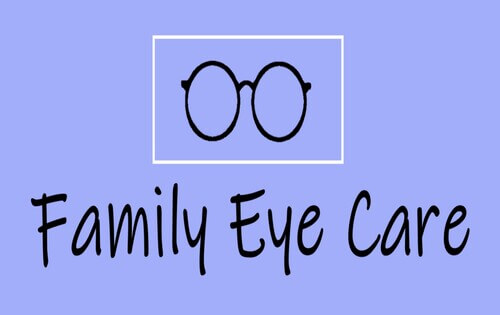Andalusia Ophthalmologist: Specialist Ophthalmologists in Your Area
Andalusia Ophthalmologist: Specialist Ophthalmologists in Your Area
Blog Article
The Pros and Disadvantages of Various Refractive Surgeries for Boosted Eyecare

LASIK Surgical Treatment
LASIK surgical procedure is a generally carried out refractive procedure that aims to remedy vision concerns such as farsightedness, nearsightedness, and astigmatism. During the procedure, a thin flap is created on the cornea, and a laser is utilized to improve the underlying tissue, dealing with the refractive mistake.
One of the main benefits of LASIK surgery is the quick enhancement in vision experienced by several clients. It is vital for individuals taking into consideration LASIK surgery to go through a comprehensive assessment by an eye treatment professional to figure out if they are appropriate prospects for the treatment.
PRK Procedure
The PRK procedure, likewise understood as Photorefractive Keratectomy, is a sort of refractive surgical procedure that intends to fix vision issues similar to LASIK surgery. Unlike LASIK, which involves developing a flap in the cornea, PRK deals with the surface layer of the cornea. Throughout the PRK treatment, the outer layer of the cornea, called the epithelium, is gotten rid of to allow reshaping of the underlying corneal cells with an excimer laser. This improving aids to correct refractive errors such as nearsightedness, astigmatism, and farsightedness.
Among the advantages of PRK over LASIK is that it gets rid of the risk of flap-related difficulties considering that no flap is produced throughout the surgical procedure. This can be valuable for people with slim corneas or those associated with contact sporting activities where eye trauma is an opportunity. The recuperation time for PRK is normally longer contrasted to LASIK, as the outer layer of the cornea requires time to restore after the treatment. Regardless of the longer recovery period, PRK can be an appropriate alternative for individuals looking for vision adjustment surgery.
SMILE Surgical Procedure
An advanced refractive surgery strategy acquiring popularity in the field of ophthalmology is SMILE Surgery. Little Laceration Lenticule Removal (SMILE) is a minimally intrusive treatment that remedies vision by reshaping the cornea using a femtosecond laser. Unlike standard LASIK surgical procedure, SMILE Surgical treatment includes creating a tiny cut in the cornea to draw out a lenticule, which leads to much less disturbance to the corneal structure and potentially much faster recovery times.
One of the More Info key benefits of SMILE Surgical treatment is its capacity to deal with nearsightedness (nearsightedness) and astigmatism with high precision, bring about exceptional visual outcomes for people. The minimally invasive nature of the treatment also minimizes the threat of complications such as completely dry eye disorder, making it a favorable choice for individuals seeking refractive surgical procedure.

LASEK Technique
Having explored the benefits and factors to consider of SMILE Surgical treatment, an additional noteworthy refractive surgery method worth examining is the LASEK Strategy. LASEK, which stands for Laser-Assisted Subepithelial Keratectomy, is a type of laser eye surgical treatment that intends to deal with refractive mistakes such as myopia (nearsightedness), hyperopia (farsightedness), and astigmatism.
Unlike LASIK, LASEK does not include creating a corneal flap. Rather, during a LASEK procedure, the specialist makes use of a diluted alcohol website link solution to loosen the slim external layer of the cornea, known as the epithelium.
One of the main benefits of LASEK is that it can be ideal for individuals with thin corneas that may not be excellent candidates for LASIK. Additionally, LASEK commonly leads to minimal post-operative discomfort and a quicker recovery time compared to PRK. The visual healing process with LASEK may be slightly longer than with LASIK.
Implantable Call Lenses
Implantable Call Lenses use a long-lasting vision improvement option for people looking for a choice to conventional call lenses or glasses. These lenses, likewise referred to as phakic intraocular lenses, are operatively inserted into the eye to deal with refractive errors such as myopia (nearsightedness), hyperopia (farsightedness), and astigmatism. cardiologist andalusia. Unlike typical call lenses that remain on the surface of the eye, implantable contact lenses work within the eye itself, supplying clear vision without the need for day-to-day maintenance or removal
One of the key benefits of implantable get in touch with lenses is their durability. Once put, they can stay in the eye indefinitely, using consistent and steady vision adjustment. Furthermore, these lenses can be an outstanding alternative for individuals who are not great prospects for laser eye surgery or that prefer a reversible vision modification treatment.
Nevertheless, implantable call lenses do lug some risks, consisting of the potential for cataracts or increased eye stress. It is essential for individuals considering this option to talk to an eye care expert to figure out if implantable call lenses are the appropriate option for their details demands and eye health.
Conclusion
In verdict, each sort of refractive surgical procedure has its very own benefits and drawbacks. LASIK surgical procedure is prominent for its quick healing time, while PRK procedure might be suitable for individuals with slim corneas. SMILE surgical procedure supplies very little discomfort throughout the treatment, however LASEK method may have a longer healing process. Implantable get in touch with lenses give a choice for those who are not suitable prospects for traditional surgical treatments. Patients must seek advice from their eye treatment company to identify the very best alternative for their individual demands.

Generally, SMILE Surgery presents a promising alternative for people looking to boost their vision via refractive surgery.
Report this page